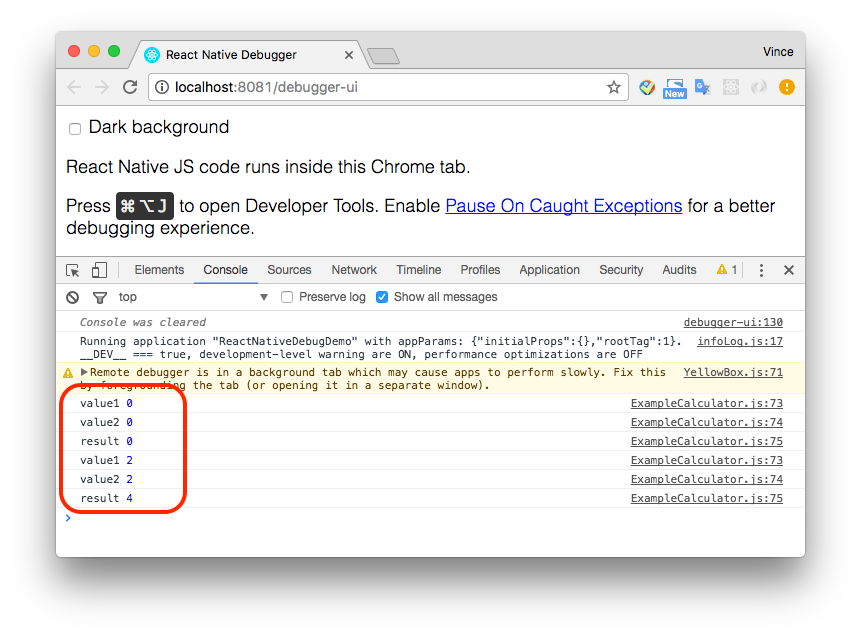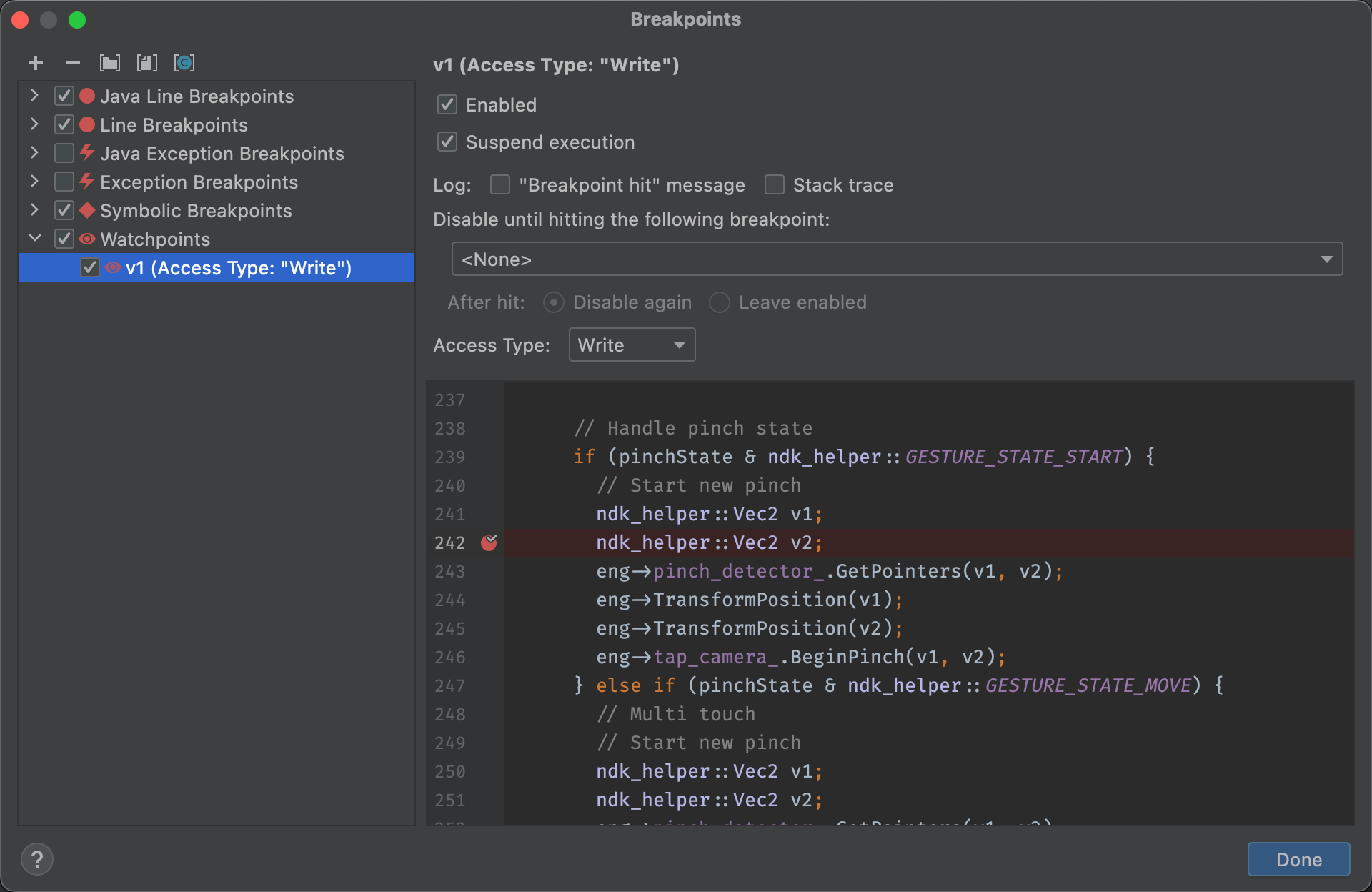

- #Android studio debugging display in console how to
- #Android studio debugging display in console android
- #Android studio debugging display in console code
- #Android studio debugging display in console windows
The logcat output display changes accordingly.
 Type a character sequence in the search field. Optionally select Regex if you want to use a regular expression. To search the messages currently displayed in logcat: Assert: Show issues that the developer expects should never happen. Error: Show issues that have caused errors, as well as the message level. Warn: Show possible issues that are not yet errors, as well as the. Info: Show expected log messages for regular usage, as well as the. Debug: Show debug log messages that are useful during development only,Īs well as the message levels lower in this list. Verbose: Show all log messages (the default). In the Log level menu, select one of the following values: The setting just determines what logcat displays. Remember that logcat continues to collect all messages regardless of the log level setting. You canĭisplay all messages, or just the messages indicating the most severe conditions. You can control how many messages appear in logcat by setting the log level. PID stands for process identifier and TID is thread identifier they can be the same if there’s The priority is one of the following values:ĭate time PID- TID/ package priority/ tag: messageįor example, the following log message has a priority of V and a tag ofġ2-10 13:02:50.071 1901-4229/ V/AuthZen: Handling delegate intent. For example, you might create an information log Your tag can be any string that you find helpful, such as the name ofĪ good convention is to declare a TAG constant in your class to Tag of a system log message is a short string indicating the system componentįrom which the message originates (for example, ActivityManager). Debug logs are compiled in but stripped at runtime, while error,įor each log method, the first parameter should be a unique tag and the You should never compile verbose logs into your app, except duringĭevelopment. Listed in order from the highest to lowest priority Generally, you should use the following log methods, Screen record : Click to record a video ofĪllows you to create log messages that appear. Logcat header : Click to open the Configure Logcat Header dialog, where you canĬustomize the appearance of each logcat message, such as whether to show the date and time. Unresponsive and you don't want to lose your log messages.
Type a character sequence in the search field. Optionally select Regex if you want to use a regular expression. To search the messages currently displayed in logcat: Assert: Show issues that the developer expects should never happen. Error: Show issues that have caused errors, as well as the message level. Warn: Show possible issues that are not yet errors, as well as the. Info: Show expected log messages for regular usage, as well as the. Debug: Show debug log messages that are useful during development only,Īs well as the message levels lower in this list. Verbose: Show all log messages (the default). In the Log level menu, select one of the following values: The setting just determines what logcat displays. Remember that logcat continues to collect all messages regardless of the log level setting. You canĭisplay all messages, or just the messages indicating the most severe conditions. You can control how many messages appear in logcat by setting the log level. PID stands for process identifier and TID is thread identifier they can be the same if there’s The priority is one of the following values:ĭate time PID- TID/ package priority/ tag: messageįor example, the following log message has a priority of V and a tag ofġ2-10 13:02:50.071 1901-4229/ V/AuthZen: Handling delegate intent. For example, you might create an information log Your tag can be any string that you find helpful, such as the name ofĪ good convention is to declare a TAG constant in your class to Tag of a system log message is a short string indicating the system componentįrom which the message originates (for example, ActivityManager). Debug logs are compiled in but stripped at runtime, while error,įor each log method, the first parameter should be a unique tag and the You should never compile verbose logs into your app, except duringĭevelopment. Listed in order from the highest to lowest priority Generally, you should use the following log methods, Screen record : Click to record a video ofĪllows you to create log messages that appear. Logcat header : Click to open the Configure Logcat Header dialog, where you canĬustomize the appearance of each logcat message, such as whether to show the date and time. Unresponsive and you don't want to lose your log messages. 

Unlike the Clear logcatīutton, this recovers and displays previous log messages, so is most useful if Logcat becomes Restart : Click to clear the log and restart logcat.In the dialog that appears, you can also choose to save to a PDF. Print : Click to print the logcat messages.Use soft wraps : Click to enable line wrapping and prevent horizontal scrolling (thoughĪny unbreakable strings will still require horizontal scrolling).Line numbers in the editor) that appear in the printed exceptions. The stack traces in the log, selecting the subsequent filenames (and viewing the correspnding Up the stack trace and Down the stack trace :.If you then click a line in the log, the view pauses scrolling at that point. Scroll to the end : Click to jump to the bottom of the log and see the latest log.Clear logcat : Click to clear the visible log.The Logcat toolbar provides the following buttons:
#Android studio debugging display in console how to
To change this default, see how to filter logcat Lists at the top of the window, as shown in figure 1.īy default, logcat displays just the log messages for your app running on theĭevice. The Logcat window shows the log messages for the selected app, as selected from the dropdown
#Android studio debugging display in console windows
Click View > Tool Windows > Logcat (or click Logcat in the tool. Note that you can configure the logcat output display, but not the Run #Android studio debugging display in console android
When an app throws an exception, logcat shows a messageįollowed by the associated stack trace containing links to the line of code.Īs of Android Studio 2.2, the Run window also displays log messages for the current Shows the log output related to the most recently run app only.
#Android studio debugging display in console code
Messages produced by app code only, and search the log. How much information is displayed in messages, set priority levels, display To display just the information of interest, you can create filters, modify Time and keeps a history so you can view older messages. The Logcat window in Android Studio displays system messages, such as when a garbageĬollection occurs, and messages that you added to your app with the Log class.








 0 kommentar(er)
0 kommentar(er)
